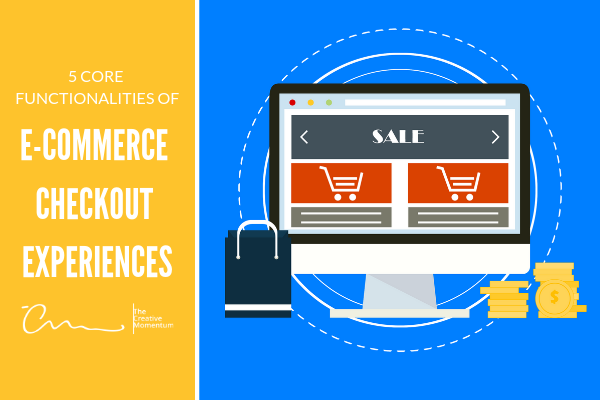
You made it to the finish line. Your customers are on your checkout page.
This is the most crucial part of your sales funnel can be one of the trickiest areas to optimize. Customers often feel last-minute resistance before committing to a purchase, and if your shopping cart doesn’t give them that oh-so-important feeling of security they need to go through with the buy, you’ll be leaving money on the table.
The last thing you want to do is drive customers away at the point of purchase with a confusing ordering experience. We recommend looking at the following issues to make sure your eCommerce checkout experience isn’t the thing keeping your visitors from converting.
1. Mobile Responsiveness
It should come as a surprise to nobody that your site needs to be optimized for the mobile experience.
Over two billion mobile users made an eCommerce transaction in 2017, with reports estimating that mobile shopping would make up one out of every four eCommerce transactions in the United States. The mobile rule applies to your checkout experience as well as your sales funnel itself.
It’s well-known that customers use multiple channels to research products these days. Data on retail purchasing shows that half of consumers will experience at least four touchpoints with a brand before committing to a purchase. The data also shows that 65 percent of these interactions begin on mobile devices, so it’s crucial that you’re meeting your customers’ expectations and creating a sales experience—from browsing to checkout—that works great on the go.
2. Shopping Cart Modifications
Your shopping cart itself is your next step. Now’s not the time to get fancy—your shopping cart is all about simplicity and flexibility. The cart needs to provide all the product information customers need to know at a glance, and if there’s a problem, it needs to be easy to make modifications.
It sounds simple, but you’d be surprised at how many eCommerce retailers trip themselves up here. Depending on whether you’re using a hosted shopping cart service or a licensed one, you’ll have different options to meet this goal. At the minimum, the cart needs to list the following information in a simple layout:
- Product category
- Product details
- Price
- Selected (and available) shipping options
A full 88 percent of shoppers agree that detailed product information is vital to the purchasing process, so don’t slack off in this area. The last thing you want to do is withhold information at the point of purchase and make users navigate away from your checkout page to find the details they need.
3. Comprehensive Order Summaries
Along those same lines, you need to make sure the order summaries you display are comprehensive and supportive of your brand. This means providing cart details as described above, but it’s not just about the UX—it’s about driving revenue.
Your checkout page is where you’ll outline the customer’s different shipping options, detail any additional taxes or fees, promote premium ordering options (like gift wrapping), or push loyalty programs that users can take advantage of (such as earning points on the dollar for every purchase).
It’s important to have this information readily available if you want to keep users on board. It comes down to trust; users expect to see clear summaries of their order before clicking send. In fact, research suggests that a full 25 percent of your shoppers will abandon their carts if they encounter unexpected shipping or transaction costs at the checkout page.
And speaking of trust…
4. Trust-Building Authentications
Trust is paramount in eCommerce. In our world of data breaches, where tens of millions of private records get exposed each year, customers have a right to be concerned about how companies handle their data. As such, you need to make it clear that your website is safe enough for them to trust.
Include logos and trust badges that give users confidence your site is up-to-date and secure. For example, if you’re a user of Norton Antivirus, you might be able to add their logo to your checkout page. It won’t add any additional security on its own—but it’s a trusted brand in malware protection, and its presence can set visitors at ease.
But don’t stop there. Make sure you include several types of proof to really hammer the security aspect home:
- SSL website certifications
- Positive customers reviews or testimonials
- Accessible customer service information
- Clear return policies
- Terms of service and conditions
All of these are easy additions that can seriously bump up your checkout page’s credibility and earn you more conversion for your trouble.
5. Streamlined UX That Isn’t Pushy
Overall, your checkout page’s goal is to provide users with the information they need, establish trust, and gently nudge them into buying. It shouldn’t be pushy, and it shouldn’t create friction.
Have you ever seen a checkout page that requires users to enter their phone number, email address, or other personal details in addition to banking info? This is antithetical to your shopping cart’s goal. We get that it’s tempting to use the opportunity to capture more marketing info, but every data point you force your customers to provide is one more reason for them to leave.
It’s fine to ask for crucial information—but don’t go overboard. The less time your checkout process takes, the less likely it is they’ll abandon their carts. In other words, if your form fields are creating friction for your buyers, get out of your own way!
Seamless Shopping From Browsing to Confirmation
These aren’t hard optimizations to make—each one involves nothing more than a little tweaking to your interface. (With the exception of mobile-responsiveness, which is a bigger task. But if you aren’t mobile-responsive in 2019, you need to work on that before anything else.)
Use the customer data you have at your disposal and see how you can improve the checkout experience. Global retail eCommerce sales will reach $4.5 trillion by 2021, so you’ll have plenty of opportunities to see how your customers interact with your cart and what optimizations you can make to help see them through.


